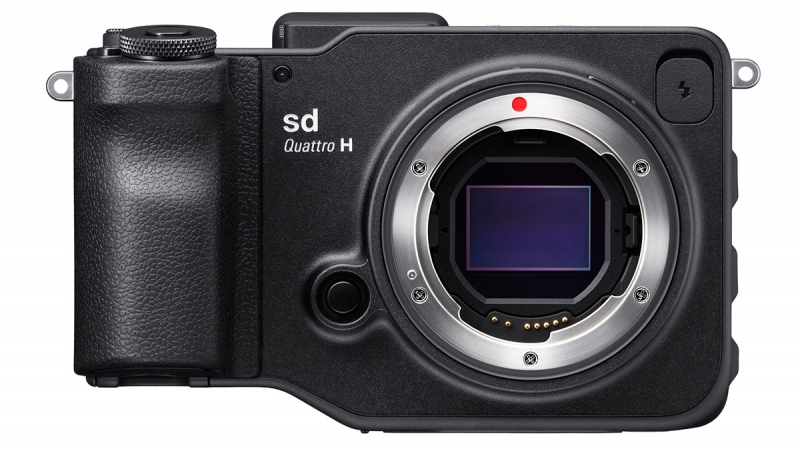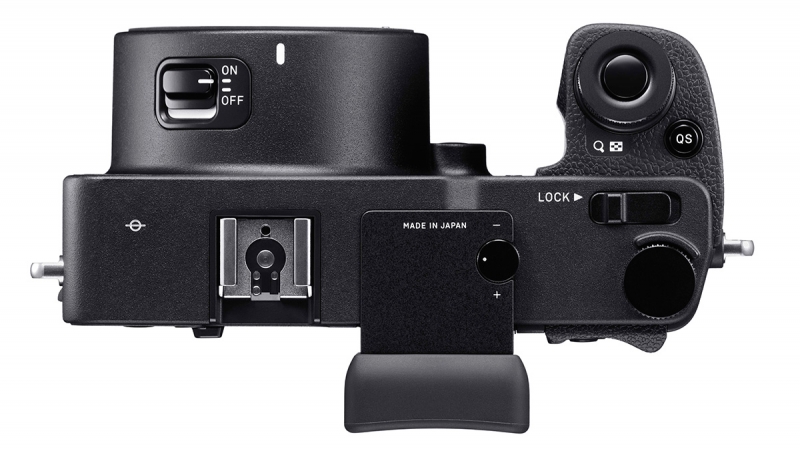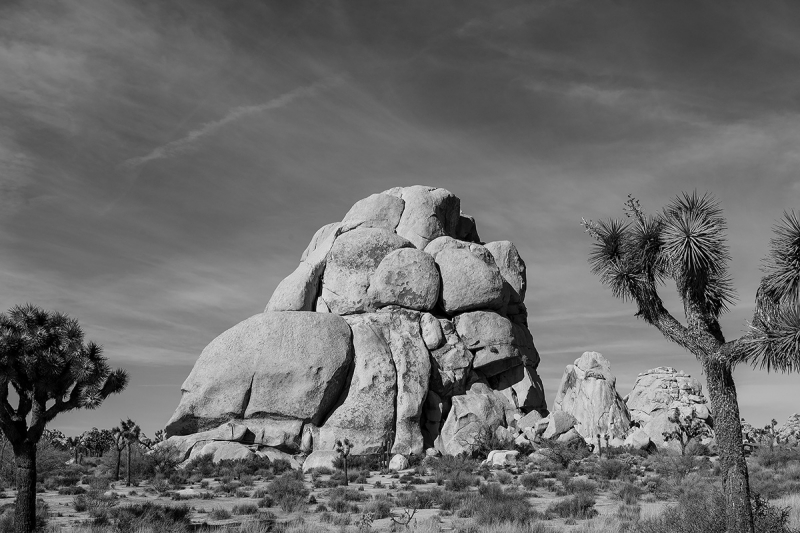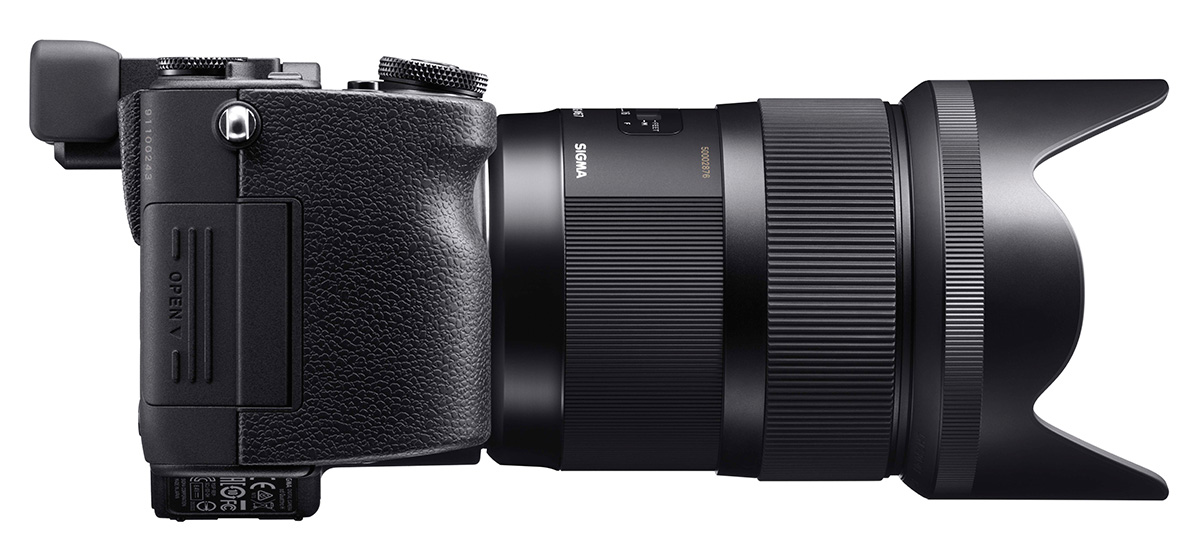Straightforward: Sigma SD Quattro H Review
Review: The simplicity and ease of use of the Sigma sd Quattro H camera may remind you of the old days in the best way.
• April 2018 issue
At a time when major manufacturers seem to be packing every conceivable function into their camera bodies, it’s refreshing that one company is producing a camera with extremely high resolution, simple operation, and a competitive price. The company is Sigma, and the camera is the Sigma sd Quattro H. What it does, it does extremely well, and what it does not do, you may not need. Indeed, its simplicity and ease of use remind me of the days of shooting with 35mm film.
UNCONVENTIONAL SENSOR
The Quattro H is a lightweight mirrorless interchangeable lens camera with an APS-H (1.3X crop) 25.5-megapixel sensor. The Foveon X3 sensor it employs, however, is a departure from conventional sensors, and the Quattro H delivers resolution far exceeding what you’d expect from a 25-megapixel camera. The Foveon sensor is both the greatest asset and biggest disadvantage of the Quattro H.
The Foveon X3 sensor is what sets the Quattro H apart from other digital cameras. A typical 24-megapixel digital camera with a Bayer array filter captures 24 megapixels of luminance information, 12 megapixels of green information, and 6 megapixels each of red and blue. Demosaicing software does the math, resulting in a 24-megapixel RGB image.

The Foveon chip layers photo sites on top of one another. In the X3 sensor, the top layer captures 20 megapixels of blue information, while the bottom layers capture about 5 megapixels each of green and red. Though this is a simplified description of complex technology, the result is increased sensitivity due to the lack of a Bayer array filter and somewhat simplified image processing. The sensor captures 25 megapixels of luminance information, 25 megapixels of blue information, and 6 megapixels each of
green and red, yielding visibly higher resolution images than you would expect from a 25.5-megapixel camera. The Quattro name derives from the top layer having four times the resolution of the two lower layers.
Other Sigma cameras require you to use Sigma’s unloved Sigma PhotoPro software to do the heavy math and produce final raw images. With the new Foveon X3 sensor, you can have the signal processing done in the camera, and the Quattro H can produce an industry standard DNG raw file as well as its proprietary X3F raw files. This makes it finally possible to process Foveon chip files in non-Sigma software. I found no difference in quality between the proprietary versus DNG raw file output, although DNG files are limited to 12 bits versus 14 bits for X3F captures. After testing this, I shot in DNG format almost exclusively, producing 143MB 12-bit raw files. Sigma claims the image quality rivals that of 50-megapixel Bayer array cameras, and the Quattro H would seem to be in that league. The camera delivers this quality at a price far lower than a medium-format camera or the highest resolution DSLRs.
There are downsides to the Foveon sensor, however. The greatest of these is noise. I found that at any ISO setting other than the base of ISO 100, noise is an issue. Applying noise reduction at higher ISOs negates the advantages of the increased resolution. You need to approach this camera as you would an SLR loaded with ISO 100 film. It is capable of delivering remarkable quality landscape images and gorgeous studio still lifes and portraits with controlled lighting, especially with Sigma Art lenses mounted. Portrait resolution with the 85mm f/1.4 Art lens on this camera is so high that every eyelash and pore is sharply rendered.
Another downside to the sensor and imaging system is slow autofocus. The new dual-mode autofocus system combines phase detection for speed and contrast detection for accuracy. There are a variety of focus modes, including face detection, movement prediction, focus peaking, and more, but none measure up to the focusing speed of even a mid-level digital camera. This is not an issue for its target use as a landscape, portrait, or still life camera.

UNUSUAL DESIGN
It’s not only the Quattro H sensor that’s unconventional, so too is the camera design. Rather than taking advantage of the potential space and weight savings of a mirrorless camera, Sigma has added an extended tube on which the lens mounts to the front of the body. The tremendous advantage of this approach is the ability to mount DSLR lenses, in particular those available in Sigma’s Contemporary and Art lines. Because of this feature, the Quattro H has the most extensive line of available lenses of any mirrorless camera.
Another unusual design decision—one that I fell in love with—is the ability to remove the IR-blocking filter and convert the camera into an infrared camera. More about this later.
In use, I found the ergonomics of the camera outstanding. The large grip makes for comfortable handholding with the Sigma 24mm F1.4 HSM and 35mm F1.4 DG HSM Art lenses I had available. Only with the 85mm F1.4 DG HSM mounted did the system feel unbalanced but still easy enough to hold with my left hand supporting the lens despite the lack of image stabilization. The grip holds the large battery that Sigma specs with a battery life at about 190 captures. I didn’t come close to capturing that in one session, but it seems optimistic. Recharging time from an exhausted battery is close to 3.5 hours.
The top and rear plates contain a minimal number of dials and buttons. The QS button on the top plate behind the release/front setting dial provides access to the quick settings menu. You can customize the QS menu to display any of 23 functions, eight at a time, covering most any function you would want quick access to. Other functions are available through a menu structure that seems minimalist compared to a digital SLR, yet every important function is available.
IMAGE QUALITY
The real test is the image quality, and the Quattro H delivers, at least at the base ISO of 100. Resolution is excellent, although I was somewhat disappointed in the dynamic range. However, you can increase the dynamic range considerably by selecting the Super Fine Detail (SFD) mode in the shooting menus. SFD is similar to HDR, capturing seven bracketed exposures in the aperture priority or manual exposure modes. The Quattro H saves the captures as a proprietary 475MB X3I file. It’s necessary to use Sigma Photo Pro software to decode them and output a final TIFF or JPEG. As with HDR photography, you should mount the camera on a tripod and should not shoot a moving subject. I did a fair amount of my testing in SFD mode, and the dynamic range issue vanished. I was often disappointed, though, that Photo Pro didn’t seem to have the anti-aliasing or ghost elimination algorithms that all modern HDR software provides. Nevertheless, with the right subjects, the dynamic range increase is enormous.
Color reproduction is pleasant, with 10 possible presets from which to choose, although five are not available with DNG capture. When shooting an X-Rite ColorChecker and correcting the gray balance, I didn’t find the color reproduction to be accurate. I confirmed this by shooting artwork in my copy setup without being able to match the original art accurately. That said, the color rendition reminded me again of shooting with a particular transparency film to achieve a specific look. Color reproduction from the Quattro H will either appeal to you or not.

With the Quattro H set for monochrome capture and the IR filter in place, the camera produces gorgeous images equal to low ISO black and white film.
Along with the color settings, there’s a monochrome mode. If you make monochrome captures, you should own this camera. With the camera’s high resolution, monochrome captures saved as DNG or even better as SFD files are the best I’ve ever seen from a digital camera.
Even more exciting is the camera’s ability to capture monochrome infrared (IR) images. Sigma has made it extremely easy to remove the IR blocking filter that sits in the lens tube. Without the filter, the sensor captures visible light but still produces a visible IR effect. Add a #87 IR lens filter and you have a true IR camera. Although the Sigma Art lenses don’t have an IR focusing mark, stopping down to f/16 pretty much does the trick, with the image sharpness degrading somewhat due to inevitable IR blooming. While Sigma is not making a big deal of this feature, I love it.
STRAIGHTFORWARD TOOL
In creating the sd Quattro H, Sigma didn’t seem interested in making a camera for the mass consumer photo market. Rather it has created a straightforward and cost-effective tool that should appeal to landscape, portrait, and still life photographers willing to accept the camera’s strengths and weaknesses.
For photographers already invested in the Sigma SA system, the sd Quattro H is a must-have camera. For others, the addition of the DNG file format will broaden its appeal. And the MSRP of $1,199 makes the sd Quattro H an interesting system addition for anyone looking for a high-resolution color, monochrome, and infrared camera rolled into one.
Stan Sholik is a commercial/advertising photographer in Santa Ana, California.
Tags: cameras mirrorless cameras sigma


 View Gallery
View Gallery
